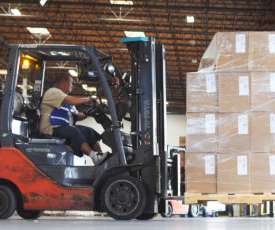How Connecting Your TMS Saves Time and Money
CH Robinson Transportfolio
JUNE 9, 2022
In your personal life, you can use a variety of devices to make purchases—from your phone to your smart TV, it’s all possible within whatever device you’re using. In fact, today you can procure freight rates from your transportation providers right in your TMS. Cost savings in loose markets. Specialized project freight.
















Let's personalize your content